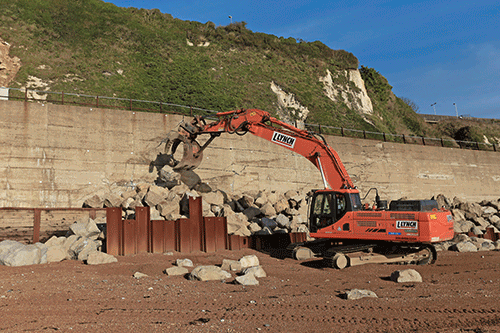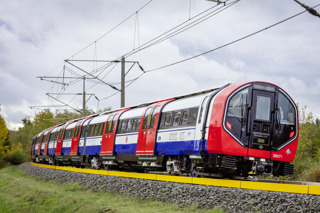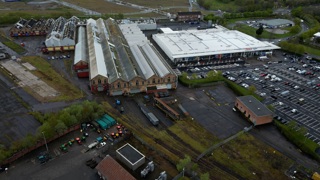Christmas time is usually memorable for the obvious reasons… food, presents and time off with family. But Christmas Eve 2015 and the days that followed will be remembered by Network Rail’s teams in Dover as the day the sea wall became forced apart, succumbing to the raw power of the English Channel.
As RAIL’s recent news coverage has shown, storm damage over the festive period was not simply confined to this short stretch of beach on the South Coast (RAIL 792). The impact of the storms of December 2015 and January 2016 was keenly felt across the entire UK rail network, saturated by record rainfall and widespread flooding.
The flood damage sustained at Lamington Viaduct on New Year’s Eve would quickly overshadow events at Dover, as it came so perilously close to collapse, shutting the arterial West Coast Main Line north of Carlisle.
The South Eastern Main Line at Dover is a comparative backwater. And it is one of two routes crossing the county of Kent, so at least the citizens of Dover and the surrounding villages therefore have an alternative route to London via Canterbury, albeit with some time penalty.
But Lamington has now re-opened, leaving Dover and ground instability on the Settle-Carlisle Line as the two outstanding major recovery works for Network Rail, after a particularly challenging winter.
The first reports that things were amiss at Dover came at 1020 on December 24 2015, when operator Southeastern tweeted that one of the two tracks had been closed above Shakespeare Beach for safety checks. By 1100 it had become clear that the still-rough seas had fundamentally undermined the sea wall, and both lines were duly shut before NR’s on-call engineers were given their summons.
“I got a phone call on Christmas Eve, after the track inspection team noticed a crack in the sea wall and a noticeable dip,” says NR Senior Programme Manager Steve Kilby. “We obviously stopped the trains, and our asset engineers did a rapid inspection revealing a section of the wall was broken, kicking off a significant voiding issue.”
What the track inspectors had noticed were large cracks along a 150-metre section of the wall supporting the railway, near to where it emerges from Shakespeare Cliff Tunnel on its final approach into Dover. Behind the cracks sinkholes had appeared two to three metres deep, taking ballast and other lineside equipment with them as seawater penetrated deep within.
Resulting in scenes reminiscent of the sea wall collapse at Dawlish two years ago, Network Rail is in no doubt about what caused this serious breach of a concrete structure that had hitherto withstood all before it for almost 90 years.
“I have observed over time spent at Dover that the beach volume will sometimes drop 1.5 metres over the daily cycle of two tides,” adds Kilby. “In the run-up to Christmas this was over two metres, exposing the foot of the wall. Instead of spray hitting the wall like normal, we’ve had green water. The tide was 6.7 metres that day, which had a double impact over both tides.”
Other than the pounding action of heavy seas being responsible for both the sea wall breaches at Dawlish and Dover, Kilby says that this is where the similarities end.
At Dawlish an 80-metre hole was punched in the sea wall on February 4 2014, closing the main line between Exeter and Newton Abbot and cutting off Cornwall from the rest of the UK rail network.
Also in the case of Dawlish, shipping containers were put in front of the damaged sea wall before the sub-soil behind it could be eroded, allowing repair work to start quickly. The line was re-opened on April 4 after a closure period of just eight weeks.
At Dover, services have already been suspended for approximately ten weeks. And as this issue of RAIL went to press, NR was still unable to give a fixed date for re-opening until designs can be completed for a permanent repair.
“This is much worse than at Dawlish,” explains Kilby. “At Dawlish the top of the wall failed, so they had a solid base to work from. Here we have a 150m hole that is 10m high, and the foundations have been washed away. The wall’s back is broken.
“We have nothing to build on, so this is very much worse. But we have spoken to the team that worked on Dawlish, we are working with the same designers, and are benefiting from shared expertise.”
So what work has been done during the ten-week closure? And why is NR unable to announce a timescale for repairs and eventual re-opening? Kilby outlines the four-stage process that he and his team are currently following.
“I got on site on Boxing Day and the cracking had continued. The first stage was safety, as there is a public footbridge crossing the line over the damaged section. We spoke to Kent County Council to have this closed and then dismantled, and we closed part of Shakespeare Beach so members of the public could not be endangered by bits of wall falling down.
“The second stage is asset protection. The whole sea wall is over 1,000m long, which we didn’t want damaged any further. So we placed more than 9,000 tonnes of rock armour to pin the wall in place in the main fracture areas.
“It took a further two weeks to get it stable, as we couldn’t put men or machinery on the trackbed above until it was stabilised. Then we disconnected the signals, protected live cables and lifted the track to create a worksite.”
Remedial action at Shakespeare Beach has been further hampered by the tidal pattern at this narrowest point of the English Channel. Working time is limited to four hours each day on the beach, which becomes three because of the time taken to move heavy lifting vehicles into position.
The next stage of the process Kilby embarked upon was investigation, because to counter the voiding of the earth beneath the track alignments, its soil mechanics and profile had to be fully understood.
Network Rail knew that this section of track had an unusual history, but soon came unstuck when trying to establish its exact construction, or the strength of its integrity.
Kilby explains: “Back in the 19th century the Victorians were great at building wooden piers, and decided to build a wooden trestle to carry this part of the line from Shakespeare Cliff Tunnel, across the beach and into Dover. In 1927 a sea wall was built in front of it to make room for a siding, and the box back-filled with chalk from the dismantling of a tunnel nearby. Hardcore was put on top and then ballast.
“It had been solid with very little settlement for many, many years. The only technical issue we ever had here was sea spray corroding the rails. But we needed to see what state the trestle was in, and if we could use this material in the rebuild.
“Our contractor Costain dug three huge test pits and used a number of methodologies to assess the state of the timber using drills, probes and visual inspection. We took samples and established the type of wood, which is true pine.
“Unfortunately, due to years of being surrounded by wet chalk it has rotted and is unsound to build on. We cannot use it in any future repairs and it will probably have to be removed. All this was needed because we had no historical records.”
He adds: “You certainly wouldn’t build a sea wall now as they did in 1927. You would have more drainage mechanisms for a start, and they did odd things like use bullhead rails to anchor the trestle.”
The final stage is permanent repair, and NR is still finalising its designs ahead of an announcement that RAIL understands will be made before the end of March. Even so, the timescale for re-opening looks certain to be in months, rather than weeks.
In the meantime, rock armour continues to be brought to the beach by barge, to form part of the permanent fix.
“Initially we brought 120 lorry loads of rock armour by road. Now we have 23,000 tonnes brought by barge from Norway. It has to come from there, as the rock armour we need has to be mined from the deep sea so it is has no fissures or cracks.
“There are few places in Europe to get it from, and the most economic way to bring it is by barge straight to the beach. It’s also taken the equivalent of 700 lorries off the A20.
“With the sort of design we will need, normally it would take nine months to start building, but we’re doing it in weeks. The Orange Army’s designers have worked really hard and we’re almost at the stage to start building.”
- This feature was published in RAIL 795 on March 2 2016.


















FrankH - 22/08/2016 22:32
Due to re open Monday September 5th, 3 months ahead of schedule.